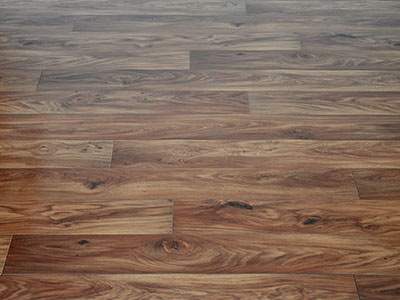Back to Flooring Products
Tigerwood Flooring Guide – Features, Benefits & Installation Advice

If you're looking to add a bold and exotic character to your interior, Tigerwood flooring is one of the most striking and durable hardwood options available. Known for its dramatic grain and rich colour contrast, this unique wood species brings both elegance and resilience into UK homes. Originating mainly from South America and Central Africa, Tigerwood is gaining popularity not only for its visual appeal but also for its long-term performance.
This comprehensive guide will walk you through everything you need to know about Tigerwood flooring – from its features and benefits to maintenance and installation tips. Whether you're a homeowner, interior designer, or property renovator, you'll discover why this exotic hardwood is a standout choice for stylish, long-lasting floors.
What is Tigerwood Flooring?
Tigerwood is an exotic hardwood species known for its distinctive look — vibrant reddish-brown tones marked by dark brown or black streaks that resemble the stripes of a tiger, hence the name. It is harvested mainly from countries like Brazil, Bolivia, and Peru, but also goes by other names such as Goncalo Alves and Brazilian Koa.
This hardwood is prized for its exceptional hardness, density, and durability. With a Janka hardness rating of approximately 1850, Tigerwood is harder than oak, making it a robust choice for high-traffic areas in residential and commercial spaces. The unique grain patterns and colour variations also mean no two planks look the same, perfect for those wanting a one-of-a-kind floor.
Its natural lustre and smooth finish contribute to an elegant, luxurious feel underfoot, and it’s often used in upscale interiors where aesthetics matter as much as performance.
Why Homeowners Love Tigerwood
Tigerwood flooring is more than just eye-catching — it delivers a wide range of benefits that make it a smart investment for UK homeowners seeking beauty, strength, and longevity in their floors. Here are some of the main reasons why it's so highly regarded:
- Striking Appearance: The vibrant contrast between the light and dark streaks gives each plank a bold, exotic look that instantly elevates any interior space.
- Exceptional Durability: With its high Janka hardness rating, Tigerwood is highly resistant to scratches, dents, and everyday wear and tear, making it ideal for high-traffic areas.
- Moisture & Pest Resistance: Naturally resistant to mould, insects, and water, Tigerwood performs well in a range of indoor environments — though it’s not recommended for bathrooms.
- Stability: Thanks to its dense structure, Tigerwood experiences minimal expansion and contraction compared to other hardwoods, making it a more stable choice in fluctuating UK climates.
- Low Maintenance: With proper sealing, Tigerwood floors are easy to clean and maintain. Occasional sweeping and mopping are generally sufficient to keep them looking great.
For those interested in futureproofing their floors, Tigerwood also responds well to professional sanding and refinishing, helping extend its lifespan even further.

Where Can You Install Tigerwood Flooring?
Thanks to its durability and visual appeal, Tigerwood flooring can be installed in a variety of spaces across the home. However, like all hardwoods, it performs best when placed in areas free from excessive moisture or humidity.
- Living Rooms & Lounges: Tigerwood adds a luxurious and bold statement to shared spaces, especially when paired with natural lighting and minimalist décor.
- Dining Areas: Its dense, scratch-resistant surface handles heavy furniture and regular foot traffic with ease.
- Bedrooms & Offices: The warm tones and natural shine of Tigerwood create a calming and elegant environment, perfect for relaxation or productivity.
- Staircases & Hallways: As a hardwearing wood, it’s ideal for high-use transitional spaces, offering beauty and durability in equal measure.
While it is incredibly resilient, Tigerwood is not recommended for bathrooms or utility rooms where high humidity or standing water is present. If you're considering underfloor heating, it’s important to consult a specialist, as solid Tigerwood may not be compatible with all radiant heating systems.
To ensure proper installation and performance, we recommend using a professional fitting service, such as solid wood floor installation experts who understand the characteristics of exotic hardwoods.
Maintenance Tips for Tigerwood Flooring
One of the reasons homeowners choose Tigerwood is that it offers long-term beauty with minimal upkeep. However, as with any hardwood, a consistent maintenance routine will help preserve its rich tones and natural lustre for decades.
- Regular Cleaning: Sweep or vacuum frequently to remove grit and dust that could cause surface scratches. Use a soft-bristled vacuum or a microfiber mop.
- Protect from Furniture: Use felt pads under furniture legs to avoid dents and scuffs, especially in high-use areas like living rooms and hallways.
- Avoid Harsh Cleaners: Clean the floor with a pH-neutral wood floor cleaner. Avoid steam mops, wax-based polishes, or abrasive solutions that can damage the finish.
- Control Indoor Humidity: Keep humidity levels stable to prevent excessive movement in the wood. This is especially important during winter months when heating can dry out the air.
- Refinishing: Over time, your floor may lose its original sheen. Fortunately, Tigerwood can be professionally restored through sanding and refinishing to bring back its original beauty.
With proper care, Tigerwood flooring can remain stunning and structurally sound for over 30 years, making it a smart long-term flooring investment.
Tigerwood vs Other Exotic Woods
While Tigerwood is a standout choice, many homeowners also consider other exotic hardwoods like Brazilian Walnut (Ipe), Jatoba (Brazilian Cherry), and Teak. Here's how Tigerwood compares:
| Feature |
Tigerwood |
Jatoba |
Brazilian Walnut |
| Appearance |
Reddish-brown with dark streaks |
Deep red tones, more uniform grain |
Dark brown, smooth, subtle pattern |
| Hardness (Janka) |
~1850 |
~2350 |
~3680 |
| Water Resistance |
High |
Moderate |
Excellent |
| Maintenance |
Low |
Moderate |
Low |
| Cost |
Mid-to-High |
Mid |
High |
Tigerwood strikes an ideal balance between beauty, performance, and affordability. Its unique pattern gives it an edge for those seeking something more visually dynamic, without reaching the high cost of woods like Ipe.
Is Tigerwood Flooring Right for You?
If you’re seeking a floor that combines exotic beauty with long-term durability, Tigerwood is an excellent candidate. Its dramatic look and tough nature make it perfect for feature areas and rooms where you want to make a bold design statement.
Here are a few points to consider before making your decision:
- Budget: Tigerwood is a mid-to-high range hardwood, offering excellent value for its quality and lifespan.
- Style: Its bold grain patterns may not suit minimalist or very traditional interiors, but it’s ideal for contemporary, luxurious, or tropical-inspired designs.
- Foot Traffic: Perfect for busy households, families, or pet owners, thanks to its scratch resistance and toughness.
- Humidity Control: As with all hardwoods, stable indoor humidity will extend its life and preserve its appearance.
If you're still unsure, we recommend speaking with a professional or visiting a showroom to see Tigerwood samples in person. Our team can help you compare options and determine if solid wood flooring like Tigerwood matches your lifestyle and space requirements.
Frequently Asked Questions
Is Tigerwood suitable for homes in the UK?
Yes, Tigerwood performs well in UK homes as long as it's installed in dry, climate-controlled areas. Its density and stability make it less prone to warping compared to some other exotic woods.
Does Tigerwood flooring fade over time?
Like most natural hardwoods, Tigerwood can darken slightly over time due to sunlight exposure. Using rugs, blinds, or UV-protective finishes can help reduce noticeable fading.
Can Tigerwood floors be refinished?
Yes, Tigerwood can be sanded and refinished multiple times thanks to its solid hardwood construction. This allows you to restore its original shine even after years of use.
How does Tigerwood compare to oak or walnut?
Tigerwood is generally harder and more exotic in appearance than both oak and walnut. While oak and walnut offer a more classic look, Tigerwood is chosen for its bold style and higher scratch resistance.
Is it difficult to install Tigerwood flooring?
Due to its density and hardness, professional installation is recommended. If you're interested in fitting Tigerwood floors, explore our solid wood floor fitting services to ensure flawless results.